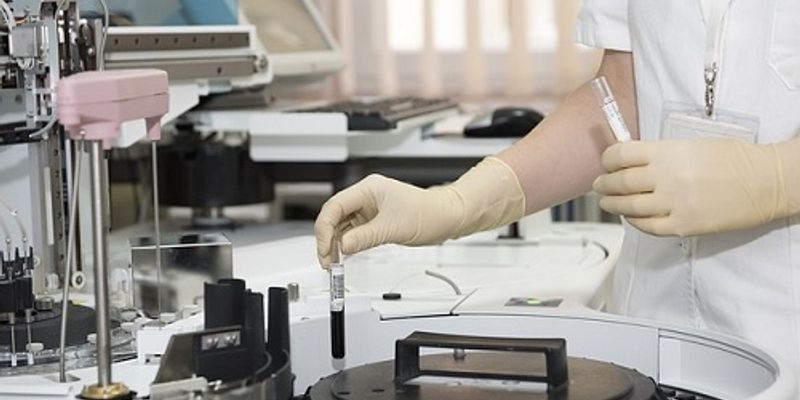Biomedical Research
Biomedical Research: the broad area of science that looks for ways to prevent and treat diseases that cause illness and death in people and in animals. This general field of research includes many areas of both the life and physical sciences. Utilizing biotechnology techniques, biomedical researchers study biological processes and diseases with the ultimate goal of developing effective treatments and cures. Biomedical research is an evolutionary process requiring careful experimentation by many scientists, including biologists and chemists.
-
The Cas9 endonuclease from the microbial adaptive immune system CRISPR can be easily programmed to bind or cleave specific DNA sequence using a short RNA guide. Cas9 is enabling the generatio...
AUG 20, 2014 | 10:30 AM
Genome and exome sequencing are widely used for both basic and clinical research and diagnosis. Although sequencing costs have dropped dramatically and technology and algorithms used for call...
Next Generation Sequencing has revolutionized genomic variant discovery. The major bottle-neck for sequencing projects is the individual, biological sample, library preparation. This platfo...
Speaker:
Joanna Hamilton, PhD, Lynne Apone, PhD, Zach Smith, MS
Presented at: Genetics and Genomics Virtual Event Series 2014
AUG 20, 2014 | 7:00 AM
The ENCODE and modENCODE consortia have generated a resource containing large amounts of transcriptomic data, extensive mapping of chromatin states, as well as the binding locations of >30...
The human genome encodes ~21,500 proteins that are subject to reversible phosphorylation at nearly 1 million phosphosites by about 538 protein kinases and 156 protein phosphatases. Amongst ot...
Speaker:
Steve Pelech, PhD
MAR 20, 2014 | 12:00 PM
Spatially restricted protein synthesis is an important mechanism for the development and maintenance of many morphologically polarized cells including neurons. While most proteins are synthes...
MAR 20, 2014 | 12:00 PM
Assessment of sensorimotor and cognitive function plays a crucial role in all facets of patient care, from diagnosing the specific disease or injury, to management and monitoring of rehabilit...
MAR 20, 2014 | 11:00 AM
Alzheimers disease (AD) is a neurodegenerative disorder producing cognitive impairment and dementia in millions of elders. Currently no treatment is effective to slow the progression of AD. M...
MAR 20, 2014 | 10:00 AM
Neuroimaging plays a large role in our pursuit of the understanding of behavior and cognition in health and disease. The past decade has seen the emergence of a wealth of resources that suppo...
MAR 20, 2014 | 9:00 AM
The Brain Research through Advancing Innovative Neurotechnologies (BRAIN) Initiative is part of a new Presidential focus aimed at revolutionizing our understanding of the human brain. By acce...
Speaker:
Story Landis, PhD, Thomas R. Insel, MD, Justin Sanchez, PhD, John C. Wingfield
Presented at: Neuroscience Virtual Event Series 2014
MAR 19, 2014 | 1:00 PM
The Willerth lab investigates how to engineer neural tissue by combining pluripotent stem cells, controlled drug delivery and biomaterial scaffolds. When generating these replacement tissues,...
MAR 19, 2014 | 8:00 AM
The Brain Research through Advancing Innovative Neurotechnologies (BRAIN) Initiative is part of a new Presidential focus aimed at revolutionizing our understanding of the human brain. By...
Speaker:
Emery N. Brown, MD, PhD, William Newsome, PhD, Justin Sanchez, PhD, Terrence J Sejnowski, PhD
Presented at: Neuroscience Virtual Event Series 2014
The zebrafish, Danio rerio, is an ideal model organism to address a broad array of biomedical questions, and is now widely employed to answer questions about aging, behavior, cancer, growth,...
Oftentimes, by the time that laboratory animal facility personnel learn about a facility construction project, the project has been underway for quiet some time without their knowledge but mo...
Speaker:
Paulina Bugyis, International AIA
Presented at: Laboratory Animal Sciences Virtual Event Series 2014
The environment in which laboratory rodents are kept has an impact on experimental data and breeding performance. The quality of the environment is defined by both the quality of the primary...
The rise of zebrafish as a research model has been dramatic. Given the global nature of the work, the rise in shipping zebrafish as a laboratory species has been sharp. Up until this point th...
The proper surgical techniques represent a key opportunity to improve the welfare of laboratory rodents, while meeting legal and ethical obligations. Use of inappropriate or poor surgical tec...
Speaker:
Szczepan Baran, VMD, MS
Presented at: Laboratory Animal Sciences Virtual Event Series 2014























